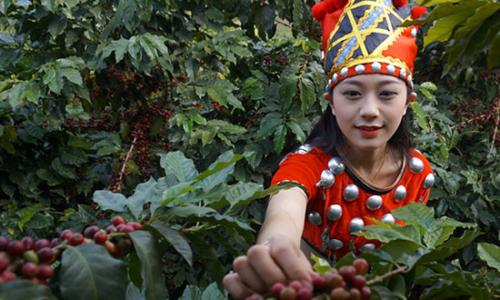Description of taste and flavor of Panamanian butterfly coffee beans brief introduction of regional varieties
Description of taste and flavor of Panamanian butterfly coffee beans brief introduction of regional varieties
There are many ways of washing, but generally speaking, the floating beans are removed after the coffee fruit is picked, then the pulp is removed, and then the coffee beans are soaked in a fermentation trough. The enzymes in the water will soften the mucus attached to the peel of the coffee beans. Natural yeast will break down the sugar in the mucus, a process called fermentation. After the fermentation is completed, move the coffee beans to the sun field to dry. In the process of drying, you need to constantly turn the coffee beans to ensure the uniformity of the drying. Finally, the shell is kept in a cool warehouse, and some raw bean merchants place an order before shelling and bagging. The processed coffee tastes clean, emphasizing bright and lively acidity, as well as clear fruit flavor and floral aroma.
Cup test results: Apple, Potato, Maple syrup, Lemon Citrus, Coffee blossom, Roasted hazelnuts, Dark chocolate
Fragrance (dried incense): Jasmine, citrus, tea, honey
Aroma: berries, flowers, oils, vanilla, citrus
Flavor: sweet, sour, non-irritating, clean, bergamot, honey, citrus, spices, flowers, berries, tea, cherries, delicate finish, long-lasting aroma, classic jadeite manor Geisha flavor.

Important Notice :
前街咖啡 FrontStreet Coffee has moved to new addredd:
FrontStreet Coffee Address: 315,Donghua East Road,GuangZhou
Tel:020 38364473
- Prev

Description of the Flavor of Grinding scale of Coffee beans in Panamanian Jade Manor
Characteristics of Panamanian Emerald Manor Coffee beans Variety Grinding scale Flavor description the manor was bought by Price Peterson's father, Rudolph A. Peterson, a Swedish banker, once served as the president of Bank of America, was the number one in the financial circle at that time, Rudolph bought Hacienda La Esmeralda only for vacation and later retirement use, should not have expected, this manor
- Next

Taste treatment of Tippi Katim Coffee beans A brief introduction to the Grinding scale Manor
About catimor: Katim is not of pure Arabica ancestry, it is a hybrid of Timor (belonging to Robusta) and caturra (a variety of Bobang), so catimor has 25% Robusta pedigree, and its Robusta pedigree also determines its taste defect: the aroma is not enough.
Related
- Detailed explanation of Jadeite planting Land in Panamanian Jadeite Manor introduction to the grading system of Jadeite competitive bidding, Red bid, Green bid and Rose Summer
- Story of Coffee planting in Brenka region of Costa Rica Stonehenge Manor anaerobic heavy honey treatment of flavor mouth
- What's on the barrel of Blue Mountain Coffee beans?
- Can American coffee also pull flowers? How to use hot American style to pull out a good-looking pattern?
- Can you make a cold extract with coffee beans? What is the right proportion for cold-extracted coffee formula?
- Indonesian PWN Gold Mandrine Coffee Origin Features Flavor How to Chong? Mandolin coffee is American.
- A brief introduction to the flavor characteristics of Brazilian yellow bourbon coffee beans
- What is the effect of different water quality on the flavor of cold-extracted coffee? What kind of water is best for brewing coffee?
- Why do you think of Rose Summer whenever you mention Panamanian coffee?
- Introduction to the characteristics of authentic blue mountain coffee bean producing areas? What is the CIB Coffee Authority in Jamaica?

